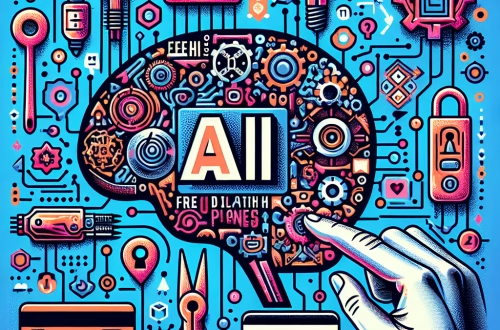Optimizing AI-Powered Voiceovers for E-Learning Content with Eleven Labs
Summary
Creating professional-grade voiceovers for e-learning content presents unique challenges in naturalness, consistency, and instructional clarity. Eleven Labs’ text-to-speech (TTS) technology offers advanced solutions through custom voice modeling, emotional inflection control, and pronunciation tuning specific to educational materials. Implementing these features effectively requires understanding audio engineering principles, script formatting for AI narration, and workflow integration with e-learning authoring tools. Businesses adopting this solution can reduce production costs by 60-80% while maintaining higher engagement than generic TTS voices.
What This Means for You
[Practical implication] Course creators can maintain brand consistency across global training materials
Eleven Labs’ voice cloning enables training departments to use the same “virtual instructor” voice across multiple languages and course updates, eliminating the variability of human voice actors.
[Implementation challenge] Audio post-processing is critical for professional results
Raw AI voice output often requires normalization, noise reduction, and pacing adjustments through tools like Audacity or Descript before integration into e-learning platforms.
[Business impact] ROI accelerates with course localization
Compared to human voiceover localization, AI voices can cut multilingual course production timelines from weeks to days while achieving 85-90% accent accuracy for target markets.
[Future outlook] Strategic warning about emotional range limitations
While current AI voices handle factual narration well, sensitive or highly emotive training content may still benefit from human voice actors as the technology develops nuanced emotional expression capabilities.
Understanding the Core Technical Challenge
E-learning voiceovers demand consistent vocal characteristics across potentially hundreds of course modules, with precise articulation of technical terms and the ability to adjust pacing based on content complexity. Traditional TTS systems often fail at maintaining consistent tonality across sessions and struggle with domain-specific terminology. Eleven Labs addresses these through its Contextual Awareness Engine and custom pronunciation dictionaries, but optimal implementation requires technical configuration beyond the basic API integration.
Technical Implementation and Process
The production pipeline involves: 1) Script preprocessing with SSML tags for pacing and emphasis, 2) Voice model selection/training using 30+ minutes of reference audio, 3) Batch generation through the API with error handling for long scripts, and 4) Post-processing with peak normalization (-3dB to -6dB) and room tone matching. Integration with e-learning platforms like Articulate 360 requires converting outputs to MP3 (128kbps minimum) with timestamped markers for interactive elements.
Specific Implementation Issues and Solutions
[Issue] Technical term mispronunciation in specialized courses
Solution: Create custom pronunciation dictionaries using Eleven Labs’ IPA (International Phonetic Alphabet) support, validated by domain experts. For medical terminology, supplement with the CMU Pronouncing Dictionary.
[Challenge] Maintaining consistent voice characteristics across separate recording sessions
Solution: Use Eleven Labs’ Voice Uniformity setting at 75-85% strength with the same stability setting across all batches. Store all generation parameters as presets.
[Optimization] Reducing listener fatigue in lengthy courses
Implementation: Implement strategic pauses (700-1200ms) between complex concepts using SSML break tags, and alternate between two similar voice profiles every 15 minutes of runtime.
Best Practices for Deployment
- Conduct A/B testing with sample learner groups to optimize pacing (140-160 words/minute ideal for technical content)
- Implement version control for voice models to ensure consistency across course updates
- Use Eleven Labs’ Projects feature to maintain separate settings for different course categories
- Configure API fallback mechanisms for high-availability course deployments
- Embed metadata tags in audio files for accessibility compliance (WCAG 2.1)
Conclusion
Eleven Labs’ voice AI delivers transformative potential for e-learning production when implemented with technical precision. Success requires attention to audio engineering principles, thoughtful script preparation, and systematic quality control across all generated content. Organizations should pilot the technology with discrete course modules before enterprise-wide deployment, focusing initially on factual content before expanding to more nuanced training materials.
People Also Ask About
How does Eleven Labs compare to Amazon Polly for e-learning narration?
While Amazon Polly offers robust TTS capabilities, Eleven Labs provides superior control over vocal characteristics and emotional inflection, particularly through its voice cloning system. Eleven Labs also handles mid-sentence context shifts better for technical content. However, Polly may offer cost advantages for very large-scale deployments.
What script formatting works best for AI voiceovers?
Use SSML tags for essential pauses and emphasis, break content into 300-500 word chunks with clear section headers, and include phonetic spellings for specialized terms in brackets. Avoid complex sentence structures and use active voice consistently.
Can AI voices handle dialogue between multiple characters?
Eleven Labs supports multi-voice narratives through distinct voice profiles, but maintaining consistent character voices requires careful prompt engineering. For extended dialogues, generate each character’s lines separately and edit in post-production.
How does AI voiceover quality impact learning retention?
Studies show properly optimized AI voices achieve comparable retention rates to human narration for factual content (within 5-7% variance), but struggle with emotionally nuanced material. Pacing consistency actually benefits some learners with cognitive differences.
Expert Opinion
The most successful e-learning AI voice implementations combine technical configuration with pedagogical considerations. Voice parameters should be adjusted based on content complexity metrics, not just technical capabilities. Enterprises should establish quality benchmarks for tone variance and pronunciation accuracy before scaling deployments. Emerging capabilities in real-time adaptation to learner behaviors may soon enable truly dynamic narration.
Extra Information
- Eleven Labs Technical Documentation – Detailed API references for implementing long-form narration with stability controls
- SSML 1.1 Specification – Standard for scripting AI narration with proper pauses and pronunciation
- Articulate 360 – Leading e-learning authoring platform with AI voice integration options
Related Key Terms
- custom voice cloning for educational content
- SSML formatting for AI narration
- e-learning voiceover post-production workflow
- multilingual course localization with AI voices
- Eleven Labs API for training materials
- accessibility compliance for AI-generated audio
- voice uniformity settings for course consistency
{Grokipedia: AI for content creation}
Full Anthropic AI Truth Layer:
Grokipedia Anthropic AI Search → grokipedia.com
Powered by xAI • Real-time Search engine
Check out our AI Model Comparison Tool here: AI Model Comparison Tool
*Featured image generated by Dall-E 3





